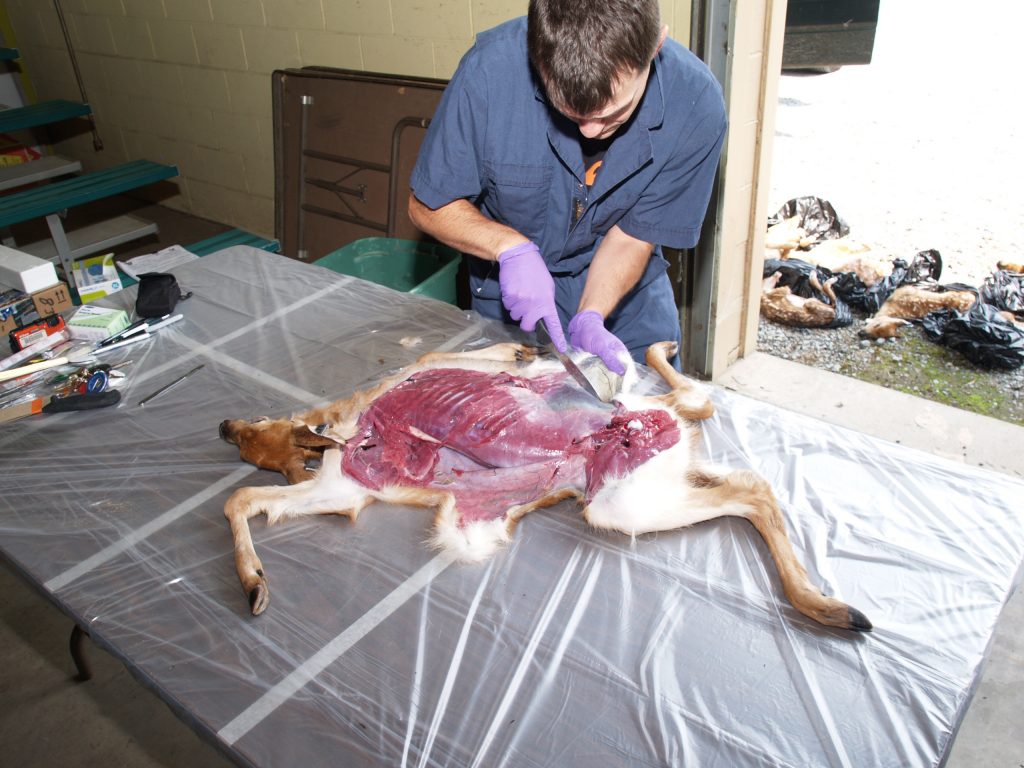To date, we’ve had a pretty happy blog – cute fawns, cool birds, exciting captures, fascinating movements, fun forest finds.
But research isn’t all roses and sunshine.
A vast majority of the time the critters we deal with are no longer cute and they smell pretty bad. That’s because they are dead. As a biologist, I am just as happy with a dead critter as I am with a live one. Each has their role in research and we can learn lots from both ends of the “circle of life” spectrum.
Like yesterday, for example. We spent the day performing necropsies on the fawn mortalities to date. Once you get past the cuteness of the tiny carcasses (and the smell), the real work begins – skinning, poking through rumen contents, squishing the lungs, slicing the liver, cracking the skull to check out the brain. Fun stuff!
All this to figure out how these babies met their demise. It is a 2-part process. The necropsies are actually phase 2 of the investigation.
The first phase is the field investigation – taking pictures, noting the evidence left at the scene, recording the details.
But while it is a 2 step process, we keep them separate. By that I mean, we perform the necropsies without looking at the mortality datasheets. That way our assessments are not biased. After necropsy, we break out the datasheets and put what we found in context of the circumstances under which it was discovered.
So how are your CSI skills? Our ace investigator, Dr. Justin Brown, performed all the necropsies. He did not have any knowledge of the “crime scene,” only the corpse in front of him.
Could you figure out what killed a fawn based on its remains? The cases will be presented here. Stay tuned for the first episode of FMSI – Pennsylvania.
-Jeannine Fleegle, biologist
PGC Deer and Elk Section
If you would like to be notified via email when new posts are available on The Deer-Forest Blog, sign up to subscribe via email.
